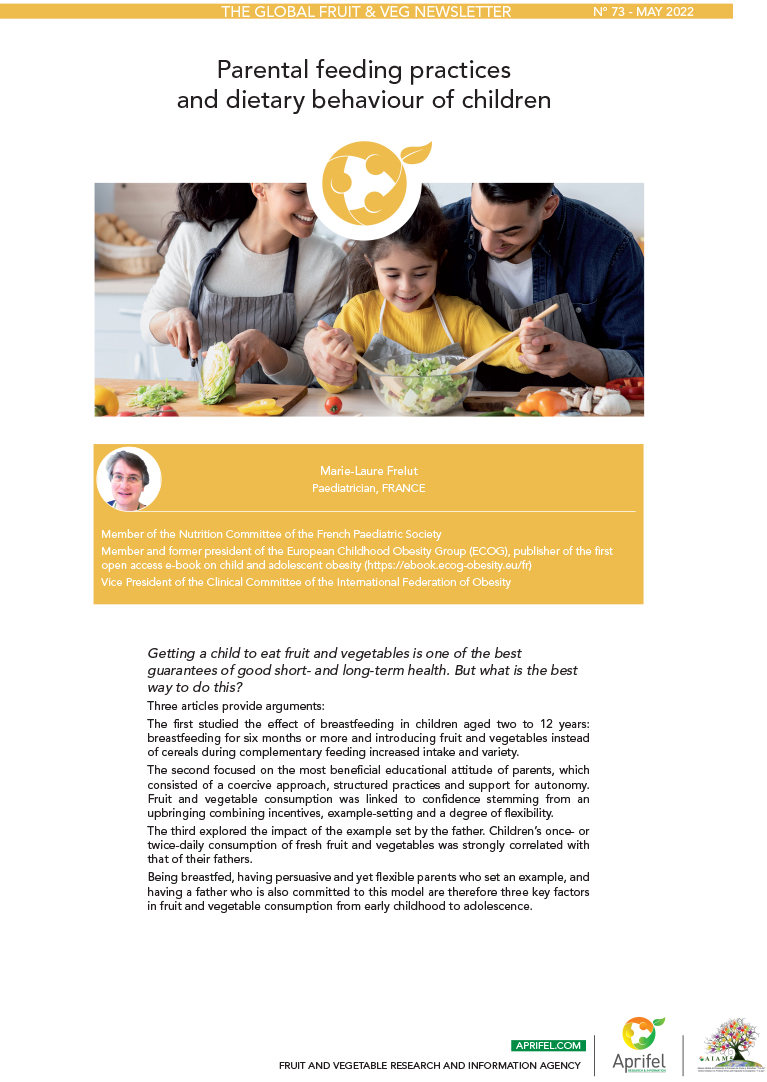Parental feeding practices and dietary behaviour of children
Editorial

Getting a child to eat fruit and vegetables is one of the best guarantees of good short- and long-term health. But what is the best way to do this ?
Three articles provide arguments:
- The first studied the effect of breastfeeding in children aged two to 12 years: breastfeeding for six months or more and introducing fruit and vegetables instead of cereals during complementary feeding increased intake and variety.
- The second focused on the most beneficial educational attitude of parents, which consisted of a coercive approach, structured practices and support for autonomy. Fruit and vegetable consumption was linked to confidence stemming from an upbringing combining incentives, example-setting and a degree of flexibility.
- The third explored the impact of the example set by the father. Children’s once- or twice-daily consumption of fresh fruit and vegetables was strongly correlated with that of their fathers.
Being breastfed, having persuasive and yet flexible parents who set an example, and having a father who is also committed to this model are therefore three key factors in fruit and vegetable consumption from early childhood to adolescence.
Marie Laure FRELUT
Paediatrician, FRANCE
ABOUT THE AUTHOR
Member of the Nutrition Committee of the French Paediatric Society
Member and former president of the European Childhood Obesity Group (ECOG), publisher of the first open access e-book on child and adolescent obesity
Vice President of the Clinical Committee of the International Federation of Obesity

